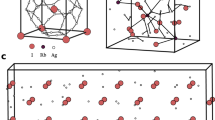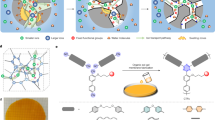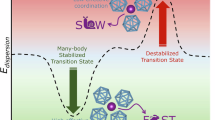Abstract
THE object of this note is to show that the theory of moving boundaries as developed by Kohlrausch and Weber overlooks the unequal transfer of the common ion at the boundary and consequently rests on a misconception of the conditions on the ‘indicator’ side of the boundary. For a stable boundary it is necessary that the slower moving ion follows the faster moving one and both should move at the same speed. This happens when the concentrations of the two electrolytes AR and BR on the two sides of the boundary are related as in the equation (1) α/nA = β/nB, where α and β are respectively the concentrations of the electrolytes AR and BR, and nA and nB are the transport numbers of the ions A and B in the electrolytes AR and BR.
This is a preview of subscription content, access via your institution
Access options
Subscribe to this journal
Receive 51 print issues and online access
$199.00 per year
only $3.90 per issue
Buy this article
- Purchase on SpringerLink
- Instant access to full article PDF
Prices may be subject to local taxes which are calculated during checkout
Similar content being viewed by others
Author information
Authors and Affiliations
Rights and permissions
About this article
Cite this article
MUKHERJEE, J. Theory of Electrical Migration of Ions. Nature 122, 608 (1928). https://doi.org/10.1038/122608a0
Issue date:
DOI: https://doi.org/10.1038/122608a0



